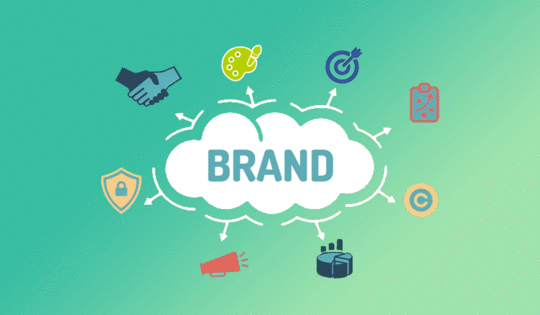10 Easy Steps for a Brand-Building Process
Having a brand that your audience loves, engages, and identifies with can be your most valuable asset. They'll be more likely to listen to you, buy from you, and recommend you to their friends.
Building a brand is not easy. In-fact must people don't even know what branding is! However, for a business to be successful it needs to build a great brand. And to help get you started we have created this 10-step guide that will teach you how.
1. Determine your Brand's Target Audience
One of the very first steps you need to take to start your brand-building process is to determine who your target audience is.
If Apple decided that their target audience was 'people who want to buy stuff,' they wouldn't be where they are today.
Part of the reason Apple has seen so much success is that they know exactly who their audience is and how to target them.
They identify with them and create a uniquely tailored communication style that their audience responds to. You need to:
- Analyze who your audience is (age, interests, hobbies, behavior, etc.)
- Segment your audience into groups for better targeting
2. Research Competitor Brands in your Industry
By analyzing your competitors, you'll gain valuable insights into your brand's industry and audience that can give the building process a serious boost.
- You can nail down and replicate their successes and avoid their failures.
- Gather information about their audience for your use (especially if you don't have any customers yet)
- Learn which unique selling points of theirs perform well
- Create a communication style that is better, more innovative, and convinces your audience that you're the better brand to choose
3. What's your Brand Mission?
Layout in simple and clear terms what values you want your audience to believe you have. Doing so across all of your marketing channels lets your customers perceive you as authentic, and see what your brand strives for.
Everything in your brand-building plan needs to be aligned with your brand mission. Write down and incorporate the following into your brands-building plan:
- Who is your target audience
- What benefit(s) you can give them
- What are your brand's goals
- Why did you start your business (This is your brand story)
4. Create a Unique Tone of Voice and Style
Every brand needs a distinct brand voice it helps your business stand out from the crowd. There's an endless choice of tones you can pick from, but it must resonate with your target audience and connect with them, or you'll be talking to a brick wall.
Your brand voice can be:
- Formal
- Informal
- Witty
- Polite
- Tongue-in-cheek
- Combination of more than one
5. Use Different Brand personas for Different Platforms
There's a chance that you'll end up targeting different types of audiences depending on the platform you're using. Instagram, Facebook, Twitter, LinkedIn, Pinterest, etc. all have audiences which behavior different from each other.
So why not use slightly different brand personas for each one? You'll have a better chance to connect with each diverse audience by tweaking your communication style.
6. Shine the Spotlight on your Brand's Personality
By now, you should have a clear idea of why your brand is unique, and the benefits it can bring to your customers.
These benefits are your value propositions, and you want to include them in all of your marketing communications, whether it be social media posts, videos, emails, or blogs.
By shining a light on the advantages you can bring to your audience, you'll help set your brand apart and rise above the competition.
7. Don't be a Copycat
Don't try and be a copycat. It's hard to take the place of an established brand.
So there's no point trying to dethrone popular brands by mimicking what they do. Instead, create your own unique brand and use your creative messaging to let people know what makes you different, better, and beneficial to them.
8. Design your Brand Logo
If designing a logo was easy, everyone would do it themselves. But don't forget, your logo will be visible to everyone, and it's your brand's visual representation of who you are. This is why professional logo designers can help you avoid logo mishaps.
Your brand logo designs needs to:
- Catch the attention of your audience
- Match your brand's tone of voice and values
- Communicate credibility and help create trust
9. Remain Consistent with Your Branding
Keeping your branding efforts consistent is crucial if you want to succeed in the long-term. It helps to build trust and become a staple of people's lives.
If your brand style is continuously changing or all of a sudden created differently, your audience will notice and think something is up.
You can keep your branding consistent by:
- Locking templates, such as available sizes, colors, and formats
- Create a brand style guide which all creators and designers need to follow
10. Optimize Regularly
Just because you're put together your brand-building plan and pulled the trigger with your first post doesn't mean you can relax. You need to keep an eye on all of your results and continuously tweak and optimize your branding so you can reach your full potential.
You can:
- Run A/B tests to find out what works best for you
- Track and analyze as many data points as you can
- Continue to investigate your competitors
- Perform more research on your target audience
Now it's your Turn
You now have all the tools to create your own brand-building plan and apply it to all of your marketing and communication activities. And don't be afraid to try new marketing channels; you never know if you'll find more success in a less popular network.
Remember that branding is an ongoing story; how will you tell your branding tale?


